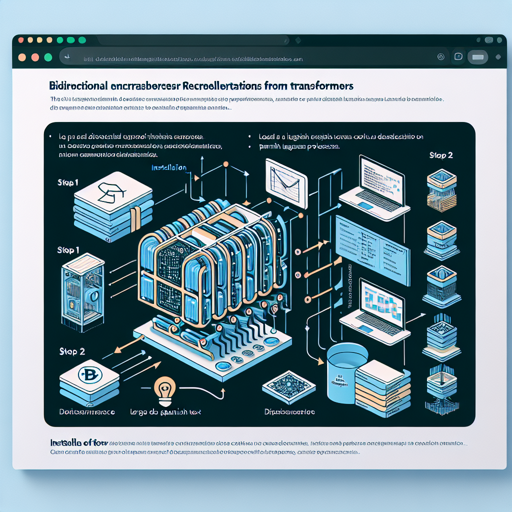Are you ready to dive into the world of natural language processing (NLP) using DistilBERT with Spanish text? This guide will walk you through how to use the DistilBERT model, making it approachable even for those who are new to programming and machine learning.
What is DistilBERT?
DistilBERT is a smaller, faster, and lighter version of BERT (Bidirectional Encoder Representations from Transformers). It retains 97% of BERT’s language understanding capabilities while being 60% faster. For those working with Spanish datasets, leveraging DistilBERT can help enhance text analysis, sentiment detection, and language translation among other tasks.
Getting Started
Here’s how you can get started with DistilBERT for processing large Spanish corpuses using OpenCENIA datasets:
- Step 1: Install the necessary libraries.
- Step 2: Load your large Spanish corpus dataset.
- Step 3: Pre-process your text data for input into the DistilBERT model.
- Step 4: Utilize the model for the desired NLP tasks.
- Step 5: Make predictions and evaluate your results.
Step-by-Step Instructions
Let’s break down each step for clarity:
Step 1: Install Required Libraries
Make sure you have Python installed along with the following libraries:
pip install torch transformersStep 2: Load Your Dataset
For loading large Spanish datasets from OpenCENIA, you can use the following code snippet:
import pandas as pd
# Replace 'your_dataset.csv' with your actual dataset file
data = pd.read_csv('your_dataset.csv', encoding='utf-8')Step 3: Pre-process the Text Data
Pre-processing helps to clean your text so that it becomes suitable for the model:
from transformers import DistilBertTokenizer
tokenizer = DistilBertTokenizer.from_pretrained('distilbert-base-multilingual-cased')
inputs = tokenizer(list(data['text_column']), padding=True, truncation=True, return_tensors="pt")Step 4: Use DistilBERT to Make Predictions
Using the processed input with the model will give you the desired predictions.
from transformers import DistilBertForSequenceClassification
model = DistilBertForSequenceClassification.from_pretrained('distilbert-base-multilingual-cased')
outputs = model(**inputs)
predictions = outputs.logits.argmax(dim=1)Step 5: Evaluate Your Results
After getting predictions, you can analyze the performance of your model.
Understanding the Code with an Analogy
Think of using DistilBERT like preparing a gourmet meal. Each ingredient (your text data) needs to be carefully chosen and prepared:
- Installing libraries is akin to gathering your cooking tools – essential for the cooking process.
- Loading your dataset is like sourcing your main ingredients – make sure they are fresh and ready to cook.
- Pre-processing the text is comparable to washing and chopping ingredients – while this step may seem tedious, it is crucial for the recipe to turn out well.
- Using DistilBERT to make predictions is the actual cooking process, where all your preparation pays off.
- Finally, evaluating your results is like tasting your dish – you determine if it met your expectations and what improvements can be made next time.
Troubleshooting
Even seasoned chefs face hidden challenges. Here are some tips for common issues:
- If you encounter installation issues, ensure that your Python version is compatible and that you have an appropriate version of pip.
- When loading the dataset, check if the file path is correct and the encoding matches the data.
- For errors in tokenization, verify the column name you referenced is correct.
- If you face any performance-related concerns, ensure your resources (CPU/GPU) are adequate.
For more insights, updates, or to collaborate on AI development projects, stay connected with **fxis.ai**.
Conclusion
With this guide, you should feel more equipped to utilize DistilBERT for processing Spanish text. Every challenge in this journey is an opportunity for growth and learning!
At **fxis.ai**, we believe that such advancements are crucial for the future of AI, as they enable more comprehensive and effective solutions. Our team is continually exploring new methodologies to push the envelope in artificial intelligence, ensuring that our clients benefit from the latest technological innovations.

